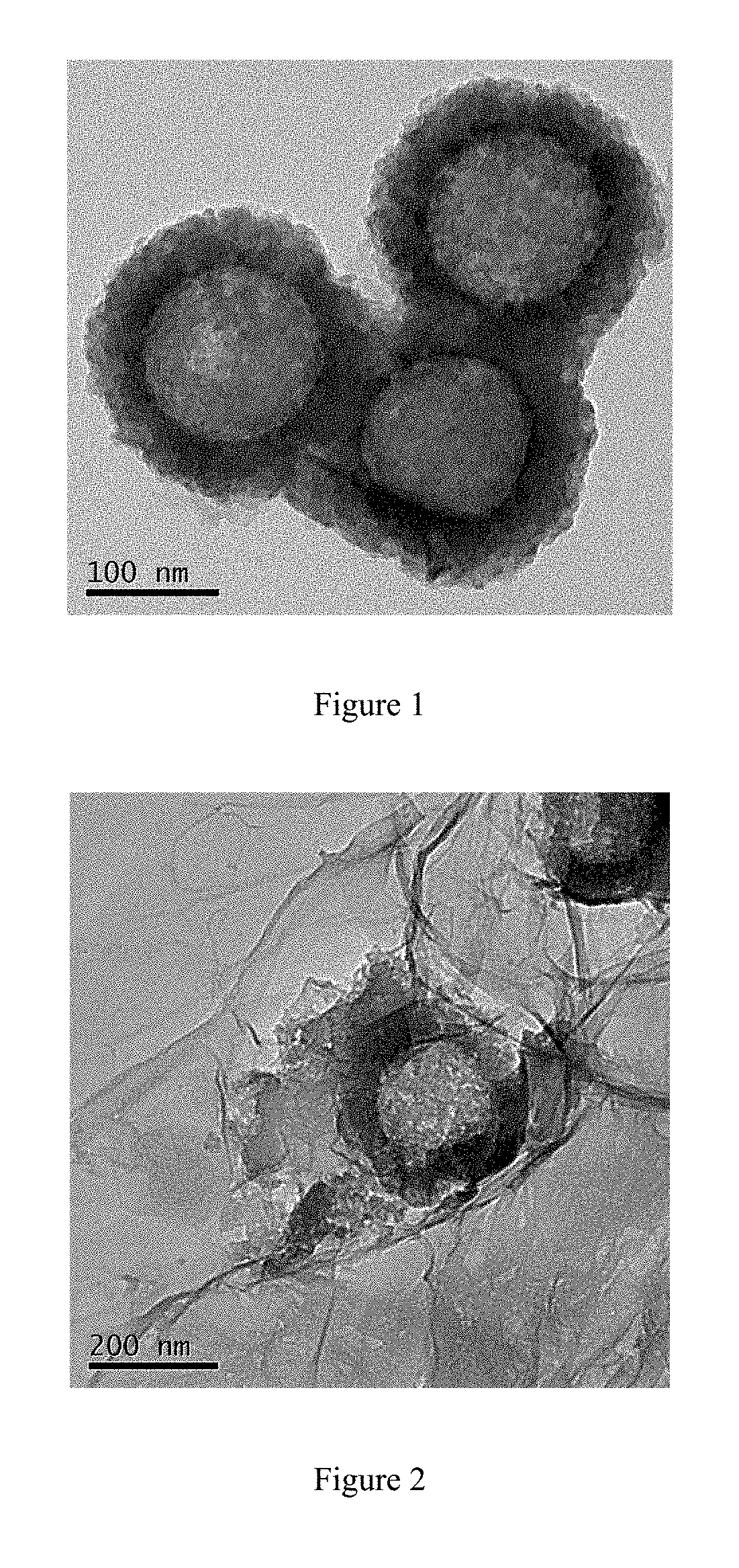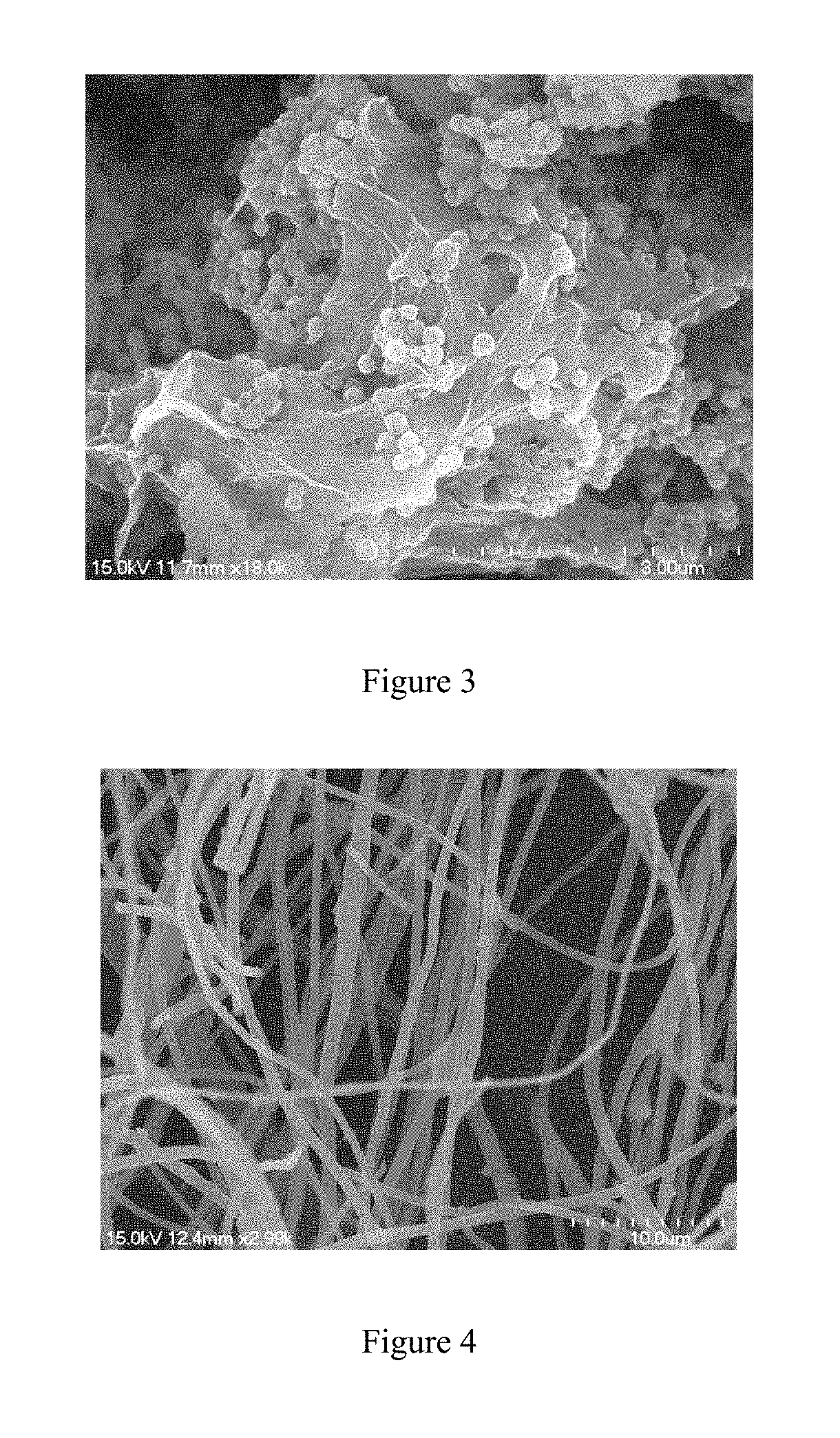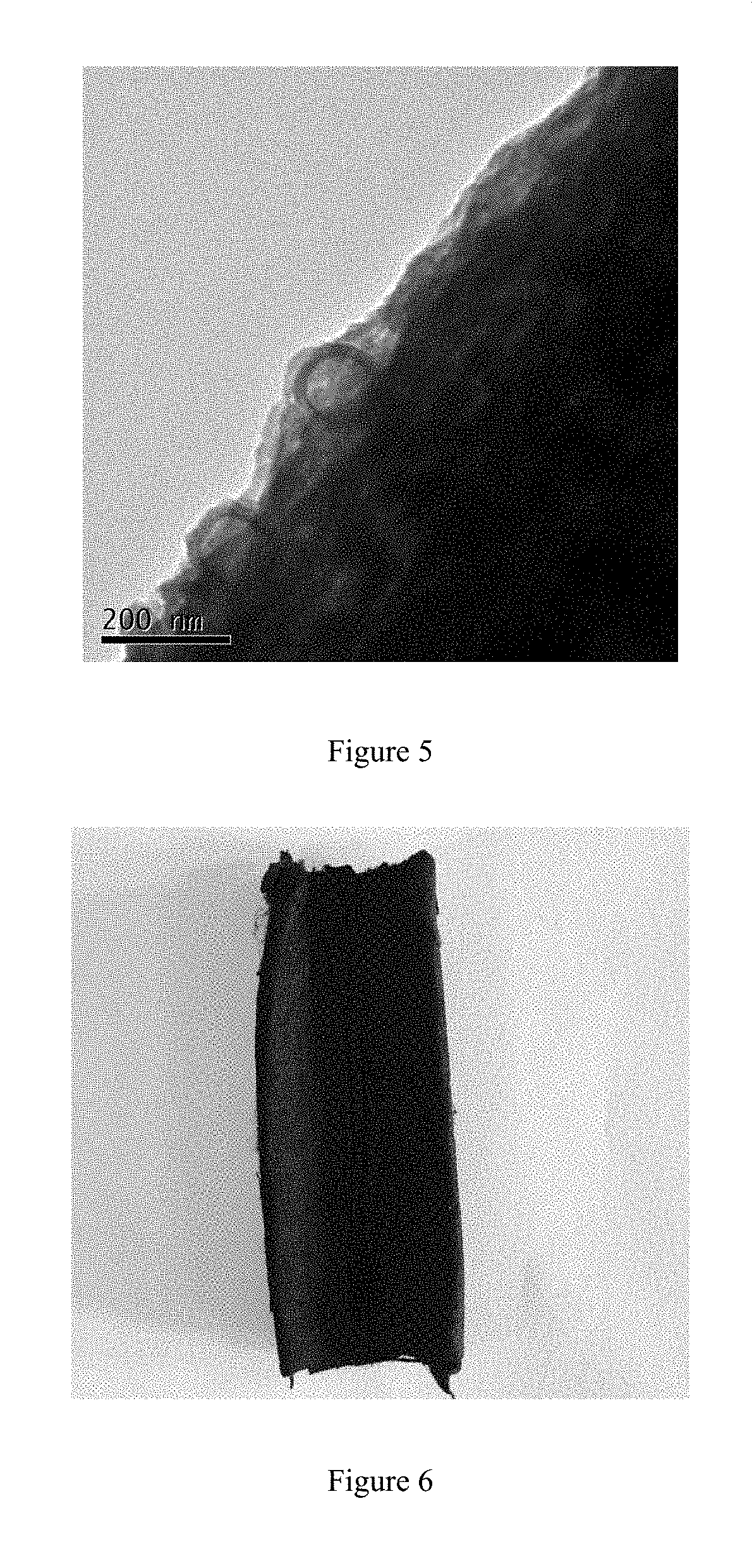Composite material used for catalyzing and degrading nitrogen oxide and preparation method and application thereof
a technology of nitrogen oxide and composite materials, applied in the field of functional materials, can solve the problems of low visible light utilization, large harm to the ecological environment and human health, and the use of pure g-c/sub>3/sub>n/sub>, so as to optimize the absorption and distribution of visible light, improve the photocatalytic efficiency, and improve the properties of photocatalyti
- Summary
- Abstract
- Description
- Claims
- Application Information
AI Technical Summary
Benefits of technology
Problems solved by technology
Method used
Image
Examples
example 1
The Preparation of SNS
[0048]22% ammonia (1.55 g), ethanol (29 g) and deionized water (5 g) was mixed, then TEOS (2.8 g) was added to the mixture and keep static for 1 h. The mixture of the above system was added with TEOS and C18TMOS (a total of 4.22 g, including 2.91 g TEOS and 1.31 g C18TMOS) and keep static for 3 h. The system was centrifugated (5000 rpm*5 min) to obtain solid followed by drying and been calcined at 550° C. for 6 h. Then the solid was washed by 1M hydrochloric acid and drying to obtain SNS (1.8 g).
example 2
The Preparation of HCNS
[0049]Under vacuum conditions, the template SNS (1 g) in examplel and melamine (5 g) was mixed and stirred for 3 hours and then ultrasonic treatment for 2 hours followed by reacting for 12 hours at 60° C.The above reaction system was centrifugated to obtain white solid. Under Ar atmosphere, the solid is heated to 550° C. at the heating rate of 4.4° C. / min for 4 hours. After calcining for 4 hours yellow powder was obtained, and then 4M NH4HF2 was used to etch silica nanosphere template. HCNS was obtained after centrifugating, washing 3 times, ethanol washing 1 time and drying at 80° C. in vacuum.
[0050]FIG. 1 is the TEM for HCNS, it can be seen that HCNS has a hollow spherical structure.
example 3
The Preparation of GO
[0051]The graphite (3 g) is added to concentrated sulfuric acid (69 mL) in the ice water bath under magnetic stirring for 2 h. After mixing evenly, half dose of Potassium Permanganate (9 g) was added to the mixture with the system temperature lower than 20° C. Then the reaction system was heating to 35° C. and stirring for 7 h. The rest of the Potassium Permanganate (9.0 g) was once added to the reaction system and stirring for 12 h. The mixture is poured into the 400 mL ice water, then 3 mL hydrogen peroxide was added to the mixture to get yellow mixture. After centrifugation and followed by washing with 5% hydrochloric acid and deionized water for 3 times and drying in vacuum drying box for 12 h, GO (1.4 g) was obtained.
PUM
| Property | Measurement | Unit |
|---|---|---|
| temperature | aaaaa | aaaaa |
| mass ratio | aaaaa | aaaaa |
| temperature | aaaaa | aaaaa |
Abstract
Description
Claims
Application Information
 Login to View More
Login to View More - R&D
- Intellectual Property
- Life Sciences
- Materials
- Tech Scout
- Unparalleled Data Quality
- Higher Quality Content
- 60% Fewer Hallucinations
Browse by: Latest US Patents, China's latest patents, Technical Efficacy Thesaurus, Application Domain, Technology Topic, Popular Technical Reports.
© 2025 PatSnap. All rights reserved.Legal|Privacy policy|Modern Slavery Act Transparency Statement|Sitemap|About US| Contact US: help@patsnap.com



